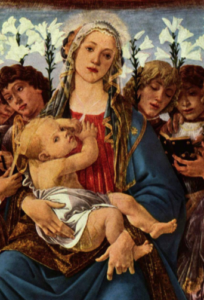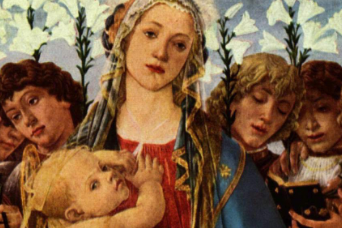 As Christmas draws closer, we continue to ponder the approaching mysteries. Today we will consider some of the things St. Thomas Aquinas taught regarding the Incarnation.
As Christmas draws closer, we continue to ponder the approaching mysteries. Today we will consider some of the things St. Thomas Aquinas taught regarding the Incarnation.
Why did the Lord choose to come to us through a woman, Mary? He could have come in any manner He pleased. Yesterday, we pondered why He took true flesh and a human nature to Himself rather than just coming as a kind of ghost or simply as God. But even in becoming truly and fully man, He could have chosen to bypass conception, gestation, birth, infancy, and youth entirely. He could have appeared suddenly on earth as a grown man—but He did not. Why not?
Remember, too, that although He chose to come through an earthly mother, he bypassed the participation of an earthly father (in the physical sense). If the biological role of a human father was bypassed in His taking flesh, why was the role of a human mother not similarly bypassed?
St. Thomas pondered this question in his Summa Theologica (part III, question 31, article 4) and set forth three reasons. St. Thomas’ commentary is shown in bold italics, while my poor remarks appear in red.
[First,] Although the Son of God could have taken flesh from whatever matter He willed, it was nevertheless most becoming that He should take flesh from a woman. First because in this way the entire human nature was ennobled. Hence Augustine says (QQ. lxxxiii, qu. 11): “It was suitable that man’s liberation should be made manifest in both sexes.”
So, in this manner both sexes were ennobled. The male sex was ennobled because the Word became flesh and was male. The female sex was ennobled because it was from Mary that Christ took His humanity.
Secondly, because thus the truth of Incarnation is made evident. Wherefore Ambrose says (De Incarnation vi): “Thou shalt find in Christ many things both natural, and supernatural. In accordance with nature he was within the womb … but it was above nature that a virgin should conceive and give birth: that you may believe that He was God, who was renewing nature …”
Both the natural and the supernatural are evident in Christ’s conception and incarnation. St. Thomas emphasized the elevated need for the natural so that we might avoid the heresy of thinking that Christ’s humanity was not real due to its wholly supernatural origin.
And [as] Augustine says (Ep. ad Volus. cxxxvii): “If Almighty God had created a man formed otherwise than in a mother’s womb, and had suddenly produced him to sight … would He not have strengthened an erroneous opinion, and made it impossible for us to believe that He had become a true man? … But now, He, the mediator between God and man, has so shown Himself, that, uniting both natures in the unity of one Person, He has given a dignity to ordinary by extraordinary things, and tempered the extraordinary by the ordinary.”
So it was fitting that Christ should be born of a woman, Mary, so as not to lose the natural in the supernatural, but that both the natural (because He is true man) and the supernatural (because He is true God) should balance and complete each other.
Thirdly, … the first man was made from the “slime of the earth,” without the concurrence of man or woman: Eve was made of man but not of woman: [though since], other men are made from both man and woman. So [it] …. remained as it were proper to Christ, that He should be made of a woman without the concurrence of a man.
In other words, it seems fitting or proper that because Adam and Eve were both created outside of the usual order of things, the New Adam, Christ, would be made in a unique manner. Eve was made without the help of another woman, but was drawn by God directly from the man, Adam. In a kind of balancing parallelism, the New Adam was made by God directly from the woman, Mary, without the help of a man.
St. Thomas seems to point to a kind of poetic balance, not a necessary balance. Saying that something is fitting does not mean that it is necessary or required, only that it is well suited to the situation. On the one hand, something can be fitting because, by it, we humans can more easily understand it. On the other hand, something can be fitting because it best suits God’s own purposes.


Well,He couldn’t very well be born of a man now could He,Chuck?…although I did hear of a “gay” Nativity scene somewhere that features 2 “Josephs”….now that’s just plain tacky
This is a pretty good illustration of how not to comment on an article. All your personal effrontery aside, I wonder if you read the column at all.
Would it be proper to ask you to comment on The Book of The Cave of Treasures.
Book of The Bees.
First and Second Book of Adam and Eve.
The Book of Enoch.
I can’t say I know anything of the first three other than to have heard from them. The Book of Enoch has more to recommend it. But frankly there is so much good to exhaust in the canonical books, I’d rather stay there.
Thank you for such a concise and understandable explanation on why Christ was born of woman. Parents with teenagers should print this and tape it to fridge ( I will). The anti-Catholics use this (if God-why be born) to pry the Faith from teens-parents have your kids understand this explanation!